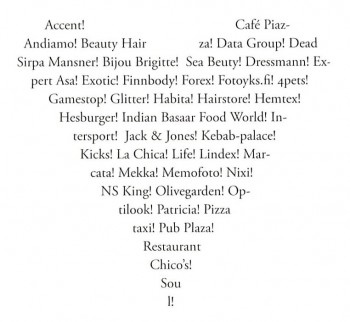Search results for "Aseguranzas para autos Pompano Beach FL llama ahora al 888-430-8975 Calcular valor de seguro automotor Buscador seguros auto La caja de seguros automotor Asegurar mi auto online Seguro basico para auto Corredor de seguros"
Last flamenco in Seville
5 November 2010 | Fiction, poetry
The tragic story of a gypsy woman, famously transformed into an opera by Georges Bizet, inspired Saila Susiluoto to write about freedom in the contemporary world: her new collection of poems, entitled Carmen, is set in the shopping centre of an asphalt city. But is this classic femme fatale really a human being – or a cyborg, perhaps? Introduction by Teppo Kulmala
She was made of plastic strips, metal bits, artificial skin, implants, circuit boards. Her heart pumped blood like a real one, her eyes watered as necessary. She was made free and loving, and almost soulful. But the soul is a quirk, said the Creator, a human mistake causing pain and death. And confusion. And the degradation of this world. They left out what they couldn’t say, what they were unable to say. They said: your name is Carmen, go forth, find your balance on threads across the world, you are a meek machine, built to love everything except just one man. You are glowing wires, bright shiny strips of plastic, a mind made of images and tones, your step is light, go, go.
The mall’s scintillating youth choir
(gesticulating in the manner of a musical)
All in good time
17 April 2009 | Letter from the Editors
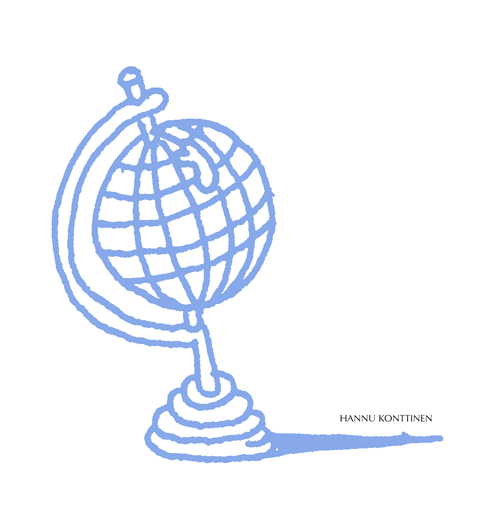 So here it is, Books from Finland’s new website. From the decision to abandon print and go online it’s been a long and sometimes circuitous journey to get here – a journey that has been far longer in the imagining than in the making. More…
So here it is, Books from Finland’s new website. From the decision to abandon print and go online it’s been a long and sometimes circuitous journey to get here – a journey that has been far longer in the imagining than in the making. More…
Rainer Knapas: Kunskapens rike. Helsingfors universitetsbibliotek – Nationalbiblioteket 1640–2010 [In the kingdom of knowledge. Helsinki University Library – National Library of Finland 1640–2010]
9 August 2012 | Mini reviews, Reviews
 Kunskapens rike. Helsingfors universitetsbibliotek – Nationalbiblioteket 1640–2010
Kunskapens rike. Helsingfors universitetsbibliotek – Nationalbiblioteket 1640–2010
Helsingfors: Svenska litteratursällskapet i Finland, 2012. 462 p., ill.
ISBN 978-951-583-244-3
€54, hardback
Tiedon valtakunnassa. Helsingin yliopiston kirjasto – Kansalliskirjasto 1640–2010
[In the kingdom of knowledge. Helsinki University Library – National Library of Finland 1640–2010]
Suomennos [Finnish translation by]: Liisa Suvikumpu
Helsinki: Finnish Literature Society, 2012. 461 p., ill.
ISBN 978-952-222-272-5
€54, hardback
The National Library of Finland was founded in 1640 as the library of Turku Academy. In 1827 it was destroyed by fire: only 828 books were preserved. In 1809 Finland was annexed from Sweden by Russia, and the collection was moved to the new capital of Helsinki, where it formed the basis of the University Library. The neoclassical main building designed by Carl Ludwig Engel is regarded as one of Europe’s most beautiful libraries and was completed in 1845, with an extension added in 1906. Its collections include the Finnish National Bibliography, an internationally respected Slavonic Library, the private Monrepos collection from 18th-century Russia, and the valuable library of maps compiled by the arctic explorer Adolf Erik Nordenskiöld. Renamed in 2006 as Kansalliskirjasto – the National Library of Finland – this institution, which is open to general public, now contains a collection of over three million volumes as well as a host of online services. This beautifully illustrated book by historian and writer Rainer Knapas provides an interesting exposition of the library’s history, the building of its collections and building projects, and also a lively portrait of its talented – and sometimes eccentric – librarians.
Translated by David McDuff
Head in a cloud
27 May 2011 | Articles, Non-fiction
Thinking, reading, writing, buying… Teemu Manninen explores the new freedoms, literal and poetic, offered by cloud computing, where what you can do is no longer limited by what you happen to have on your computer
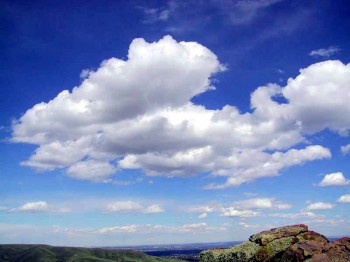
High in the sky: cumulus clouds. Photo: Michael Jastremski, Wikimedia
I’m sitting in a rocking chair on the porch of a cottage by a lake. My fingers tap and slide on the surface of a black glass panel, a kind of instrument used in the composing of literature. Each tap equals a letter, a series of taps equals a word, a symphony of taps becomes a paragraph, a paragraph an essay.
The glass panel remembers these letters and words and the writings they become, and knows them by their names, but it could also record anything I see or hear. I could even talk to it and it would understand my commands, as if some nether spirit were captured inside, a magic genie slaved to do my bidding. More…
Kirja muuttuvassa tietoympäristössä [The book in a changing information environment]
21 August 2014 | Mini reviews, Reviews
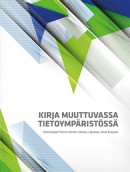 Toim. [Ed. by] Markku Löytönen, Tommi Inkinen, Anne Rutanen
Toim. [Ed. by] Markku Löytönen, Tommi Inkinen, Anne Rutanen
Helsinki: Suomen tietokirjailijat ry. [The Finnish Association of Non-Fiction Writers], 195 p., ill.
ISBN 978-952-67356-3-4
paperback; available also online:
http://www.suomentietokirjailijat.fi/jasenyys/julkaisut/kirja-muuttuvassa-tietoymparisto/
In the Western world the experience of reading is undergoing a critical change. There is even talk of a third information revolution. Books are increasingly acquiring electronic form, and the future of the printed book is being called into question. Kirja muuttuvassa tietoympäristössä contains the considered opinions of 18 experts on what is taking place in the field of non-fiction, and gives an overview of the literature on the current situation, which is seen from the point of view of the bookstore, the library, the author and the publisher. There is a discussion of intellectual property issues, developments in technology, and changes in the use of teaching materials, language, and reading habits. Finland is a leading country in both literacy and reading. The number of books has slowly declined in recent years, but it seems that the country’s youth has maintained an interest in books, and in fiction in particular. Although printed reference works of the encyclopedia type have given way to the information provided by the Internet, it is likely that literature and reading will preserve their status as a part of human culture.
Translated by David McDuff
A crafty Christmas
9 December 2011 | This 'n' that
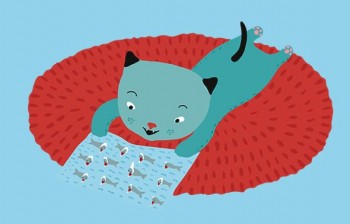
Advent calendar: make one yourself! Illustration: Virpi Penna
December: the street decorations, which have been up for a month, are beginning to look a little tawdry; the office party season is in full swing and most people are beginning to feel a little the worse for wear; there are only – let’s not count them, but far too few, shopping days left till Christmas.
Festive stress has already set in, and we’re not even halfway through the month.
That’s the scene in London, at least.
In Finland, Christmas and the weeks leading up to it are a much more muted, not to say calmer, affair. The customary greeting at this time of year is ‘rauhallisia joulunalusviikkoja’ – ‘peaceful before-Christmas weeks’ (well, who isn’t afraid of Xmas panic…) and Christmas itself has a quiet, candle-lit, somehow pious quality (even for non-believers).
The tone is set by the announcement of the Christmas peace from the city of Turku at noon on Christmas Eve, and many people still begin their celebrations with a visit to the graveyard to set a lighted candle on the graves of nearest and dearest before proceeding to the festivities: the traditional Christmas dinner (with its centrepiece of ham, not turkey), followed by a visit by Father Christmas, preferably in person.
In the harsh weather and short daylight hours of this time of year so far north, staying in has a lot to recommend it, and making things at home in preparation for Christmas has always been a popular pastime – with children in particular. This year the Thisisfinland website together with Tammi publishers, in conjunction with the writer Mysi Lahtinen and the children’s illustrator Virpi Penna, has produced an online advent calendar with a crafts project for each day up to Christmas Eve.
Whether it’s making a snowflake window from cut paper, simply painting birch-twigs white or, if the climate permits, celebrating Finland’s Independence Day (6 December) by making a lantern out of snow and a candle, these are projects that can be tackled by the young, and the young at heart, of any age.
While Joulupukki may feel slightly stressed (but with him, of course, it’s an occupational hazard), we wish you a peaceful pre-Christmas fortnight!
New from the archives
29 January 2015 | This 'n' that
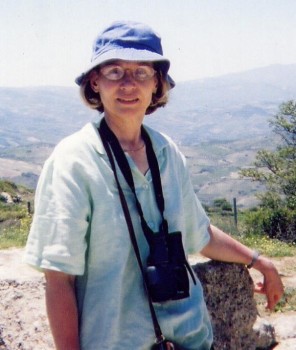
Ulla-Lena Lundberg
Low-lying, sea-girt pieces of rock strewn across the sea midway between Finland and Sweden, the Åland Islands – known in Finnish as Ahvenanmaa – are a world unto themselves. In mind and spirit they are separate from both Finland (to which they technically belong) and Sweden, giving their inhabitants, writers included, a fascinating outsider status.
This week’s archive find, an extract from Leo, the first volume of Ulla-Lena Lundberg’s trilogy set in 19th-century Åland, offers a compelling portrait of the potent mix of cosmopolitanism and (literal) isolation of the islands’ seafaring community, in which the men sail the seas and the women stay at home.
Born on Åland in 1947, Lundberg is a writer of novels, short stories, poems and other essays; her work, she says, derives from her habit of sitting under the table as a small child and listening to what the grown-ups said. She received the Finlandia Prize in 2012 for her novel Is [‘Ice’], and the Tollander Prize in 2011.
*
The digitisation of Books from Finland continues apace, with a total of 354 articles and book extracts made available online so far. Each week, we bring a newly digitised text to your attention.
What the critic said
9 July 2010 | Letter from the Editors
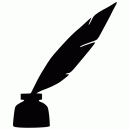
Illustration by Joan Barrás
‘Pay no attention to what the critics say. A statue has never been erected in honour of a critic,’ said the Finnish composer Jean Sibelius.
No, probably not; but people still read what the critics write – and, sometimes, also what they wrote fifty or a hundred years ago.
An annual list of professions most highly valued by the public in Finland is always headed by surgeons. Shepherds generally feature at the bottom of the list. But critics fare none too well, either – a couple of years ago they were ranked between butchers and gravediggers. Which, of course, can be interpreted, in metaphorical terms, either as hilarious or tragicomical. More…
Thirsty for poetry
22 May 2014 | This 'n' that

Johanna Venho (above) and Vilja-Tuulia Huotarinen. Photo:
Jano (‘Thirst’) is the name for a new online magazine: according to the writers and poets Johanna Venho and Vilja-Tuulia Huotarinen, its editors, it is a ‘poetry journal for all’ – for poets, the general public, for anybody.
Two issues have been published since November 2013. The theme of the first one is Time, of the second, Place.There are interviews, autobiographical texts, texts by critics and poets. More…
One-night stand: an interview with publisher Leevi Lehto
17 September 2010 | Interviews
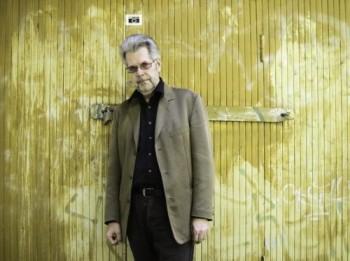
Leevi Lehto. Photo: Lotta Djupsund/Savukeidas
Founded by poet Leevi Lehto, ntamo is seen by many as the black sheep and enfant terrible of the world of Finnish publishing.
From its inception, ntamo (shortened from the word kustantamo, publishing company) has striven to subvert the familiar conservative models of publishing that audiences are used to.
Ntamo publishes books for small circulation, such as poetry and experimental prose. Its catalogue includes works both by celebrated writers, such as Kari Aronpuro, and by a whole host of authors making their literary debuts.
Lehto’s objective has been to publish as many books as possible, using a system of print on demand, and to have as little to do with the books’ content as possible. What’s more, ntamo’s publications are not marketed at all. Readers can find information on new publications by following the publisher’s blog [in Finnish only]. I met up with Lehto a while ago and we discussed ntamo’s current situation, new trends in the publishing world and the future of books and literature in general. More…
For your eyes only
11 May 2015 | This 'n' that

Photo: Steven Guzzardi / CC BY-ND 2.0
Imagine this: you’re a true bibiophile, with a passion for foreign literature (not too hard a challenge, surely, for readers of Books from Finland,…). You adore the work of a particular writer but have come to the end of their work in translation. You know there’s a lot more, but it just isn’t available in any language you can read. What do you do?
That was the problem that confronted Cristina Bettancourt. A big fan of the work of Antti Tuuri, she had devoured all his work that was available in translation: ‘It has everything,’ she says, ‘Depth, style, humanity and humour.’
Through Tuuri’s publisher, Otava, she laid her hands on a list of all the Tuuri titles that had been translated. It was a long list – his work has been translated into more than 24 languages. She read everything she could. And when she had finished, the thought occurred to her: why not commission a translation of her very own? More…
On reading, books and horses
4 June 2010 | Articles, Non-fiction
Horses, women, cars, men and reading: Teemu Manninen takes a look at the changes that illogical history makes
I have a friend who is an avid reader and who also talks about the books he reads. But being a staunch conservative when it comes to reading habits, I just cannot consider him a true friend of literature. The reason: he only reads non-fiction books. To me, ‘being a reader’ means reading fiction and poetry.
But increasingly it seems that real literature is becoming more and more marginal, whereas non-fiction (self-help, history, travel guides, popular science, popular economics, cookbooks) is what sells and keeps the industry afloat. The recent Finnish ‘essay-boom’ is an example of this development, with young writers like Antti Nylén or Timo Hännikäinen gaining recognition as important contemporary authors solely through their work as essayists; Hännikäinen has also written poetry, but Nylén is strictly a non-fiction writer. More…
New from the archive
26 March 2015 | This 'n' that
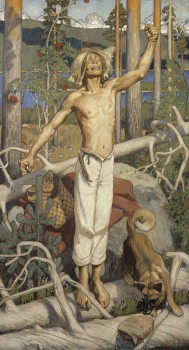
Kullervo’s curse. Painting by Akseli Gallen-Kallela (1899)
Finland’s national epic adapted for the stage by Finland’s national writer: best known as the author of the first significant novel in Finnish, Seitsemän veljestä (Seven Brothers, 1870), Aleksis Kivi (1834-1972) also turned one of the Kalevala’s grimmest stories, that of Kullervo – a tale of incest, revenge and death– into a five-act tragedy.
The translation is by one of Books from Finland’s most long-standing collaborators, David Barrett (1914-1998), a true linguistic genius with a speciality in Georgian as well as Finnish in addition to classical Greek; as well as his work with texts in Finnish and Georgian, he made extensive translations of Aristophanes for Penguin Classics. Barrett felt, as he argues here in his introduction, ‘that Kullervo, if suitably translated, might succeed where Seven Brothers had failed, in bringing Kivi’s genius to the notice of the English-speaking world’.
Was he right? It is up to you, dear readers, to judge.
For a very different, demythologized, view of the Kullervo story, we also publish a manuscript by the modernist poet Paavo Haavikko (1931-2008) from his television adaptation Rauta-aika (‘Age of iron’, 1982).
The Kalevala is in development as a film by the Finnish entertainment company Rovio, of Angry Birds game, and the Finnish-born video game company Supercell. It remains to be seen how the Kalevala take to the big screen.
*
The digitisation of Books from Finland continues, with a total of 372 articles and book extracts made available online so far. Each week, we bring a newly digitised text to your attention.
A library visit
17 August 2012 | In the news

Please come in: National Library of Finland. Photo: Kallerna/Wikimedia
Take a tour: browsing the online bulletin of the Finnish National Library, you’ll find a link (for iPad or other devices) which takes you inside the handsome main building, next to the Cathedral in the heart of Helsinki.
The library building, from 1845, was designed by the most important architect of the city, C.L. Engel.
The latest issue of the library bulletin includes articles on research, conservation and digitisation of the library collections as well as news and pictures.
Iconic Inha
5 February 2015 | This 'n' that
From time to time we have featured the charismatic photographs taken of Helsinki by I.K. Inha (1865-1050) in 1908 – most recently in a book pairing Inha’s iconic images with contemporary photographs of the same scenes by Martti Jämsä (2009). Fifty-one of the images have now been made available online to the public for the first time on the Finnish Museum of Photography’s Flickr page.
Many of the scenes are so little changed that it’s a shock to see them peopled with behatted gentlemen and ladies in long skirts. Commissioned for Finland’s first travel guide, the photographs show the handsome buildings, parks and seafronts of a solidly bourgeois looking city that is still the capital of a Russian province, an autonomous Grand Duchy actively fostering the dream of independence that is to be realised nine years later, in 1917.

Student Union Building on Itäinen Heikinkatu (now Mannerheimintie). I.K. Inha, 1908.
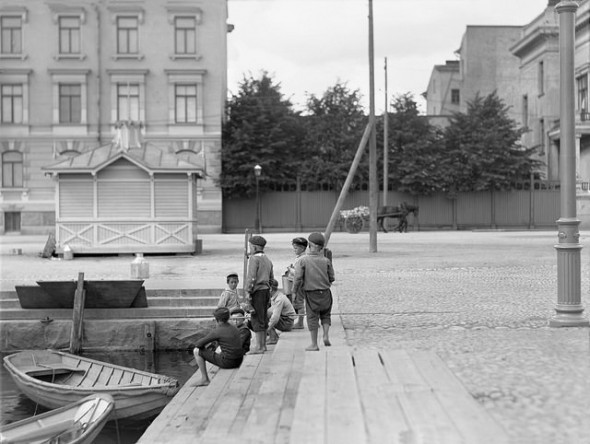
Boys at Hietalahti harbour. I.K. Inha, 1908.

